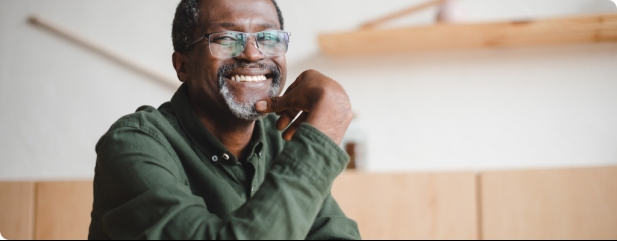Archived article
Please note that tax, investment, pension and ISA rules can change and the information and any views contained in this article may now be inaccurate.
How do I use my pension in retirement?

People spend most of their lifetime with their savings goals focused on building up their pension pots, but what about when it comes to drawing down that money in retirement? What changes do you need to make to your investment strategy and how do you manage the withdrawals?
After 30, 40 or even 50 years of working, people aim to have built up a decent size pension pot, having contributed regularly and hopefully made some savvy investment decisions along the way.

But once you come to retire you need to work out how to use that pot most effectively. You’ll need to think about how you invest it, how much risk you want to take and how long you need it to last.
One option is to use some or all the pot to buy an annuity, which gives you an income for life. Annuity rates are currently low so might not appeal to some people, and for the purposes of this article we’ll assume you don’t want to take that route.
IF YOU’RE KEEPING YOUR MONEY INVESTED, YOU NEED TO THINK ABOUT A FEW THINGS:
— How much cash?
If you’re using this pot as your main (or only) source of income you want to make sure you put enough cash to one side to pay yourself an income for a while.
The last thing you want is markets falling and you having to sell down some investments in order to pay your electricity bill that month or pay for the food shop.
You should have at least a year’s income set aside in a cash account for you to access but you might want to have more so you’re not at the mercy of falling markets.
The more you have in cash the more money you have earning little interest – so it’s a balancing act.
On top of this you should also have your emergency pot in cash – this is the money put to one side should the boiler blow up or the car break down, so you’ve got money to hand in a crisis. With this cash you want to try to get the highest interest possible so it’s at least earning you some money until you spend it. However, don’t lock it away in a lengthy fixed term account where you must wait ages to access the cash.
— How do I change my investments?
Until now you will likely have been focused entirely on growing your pot as much as possible, within you own risk limits. But that might change now you’re relying on this money to pay the bills.
One option is to switch to an income focus, whereby you invest a proportion of your pension in income-generating assets or funds. This means that you can draw off the natural income from your portfolio and leave the capital untouched.
Another approach is to keep investing for the best growth you can find and just take a chunk of the capital out when you make your withdrawal. You could also do a combination of the two.
But you also need to think about your risk tolerance. Now you rely on this money to cover living costs you might want to dial down the risk in your portfolio.
If you’re worried about how a big fall in stock markets might affect your lifestyle then it could be smart to put more of the money in assets that are considered safer, such as gold, bonds and cash. This is an entirely personal decision and depends how long you need the money to last, what other sources of income you have and your risk appetite.
For example, someone who has a very low risk tolerance and doesn’t want to worry about their money falling in value might have around 50% in bonds, another 10% in gold, 20% in cash and the remaining 20% in the stock market.
Clearly the returns on this portfolio might be lower over the long term than one invested 100% in equity markets, but that might be a perfectly fine trade-off for someone.
In contrast, someone else who doesn’t mind a bit more risk and exposure to stock markets might switch the bond and equity allocations to have 50% in stock markets and 20% in bonds.
Inflation is the big thing you need to bear in mind, as you’ll want your money to at least keep pace with a rising cost of living. Failing to beat the rate of inflation effectively means losing money in real terms. Inflation is currently low, standing at 0.6% in June, but the Bank of England aims to have it at 2% so that’s probably a better benchmark for you to consider.
— How much should I withdraw?
It’s tricky to know how much money to take as an income. Retirement can often last for longer than the time you spend building up the pot, so it’s a difficult balancing act to make sure you have enough money to enjoy retirement but not withdraw too much that you run out of money before you die.
The previous rule of thumb was withdrawing 4% of your portfolio a year, which went on the premise that you could make your money grow by 4% a year and so you wouldn’t be depleting your pot.
In order to come up with a more appropriate number, first you need to think about life expectancy, as we’re all living longer. Look at how old you are when you retire and the average life expectancy of someone your age to give you a guide – clearly you live longer or shorter than this so don’t see it as gospel.
Then you need to ask yourself whether you plan to exhaust every last penny of your pension or whether you plan to leave some to your children, spouse, family or the local cats home – this will have a big impact on how much you take.
For example, someone with a £500,000 pension pot who is likely to live for another 30 years after retirement and plans for their money to grow at around 4% a year could take out £25,000 each year and still have £245,000 in their pot after 30 years to leave to beneficiaries.
Alternatively, they could take an income of £29,500 a year and spend every penny by the time they reach that 30-year mark.
If someone had the same pot size and same life expectancy but wanted to take less risk and thought their money might only keep pace with inflation, at 2%, they could take £17,000 income a year and still have around half the pot left after 30 years. Or they could take £23,000 income a year and spend every penny in the pot.
Important information:
These articles are provided by Shares magazine which is published by AJ Bell Media, a part of AJ Bell. Shares is not written by AJ Bell.
Shares is provided for your general information and use and is not a personal recommendation to invest. It is not intended to be relied upon by you in making or not making any investment decisions. The investments referred to in these articles will not be suitable for all investors. If in doubt please seek appropriate independent financial advice.
Investors acting on the information in these articles do so at their own risk and AJ Bell Media and its staff do not accept liability for losses suffered by investors as a result of their investment decisions.
Issue contents
Editor's View
Feature
First-time Investor
Great Ideas
- Kainos up 50% since we said to buy, helped by knock-out trading update
- Our ‘buy’ call on resilient Texas Instruments gets off to solid start
- Coca-Cola shares are trading at a rare bargain level
- Recent share price dip is nothing to worry about with Tristel
- Keep buying AG Barr as latest update is very encouraging
- Knights set to lure top lawyers and their clients from rival law firms

 magazine
magazine








